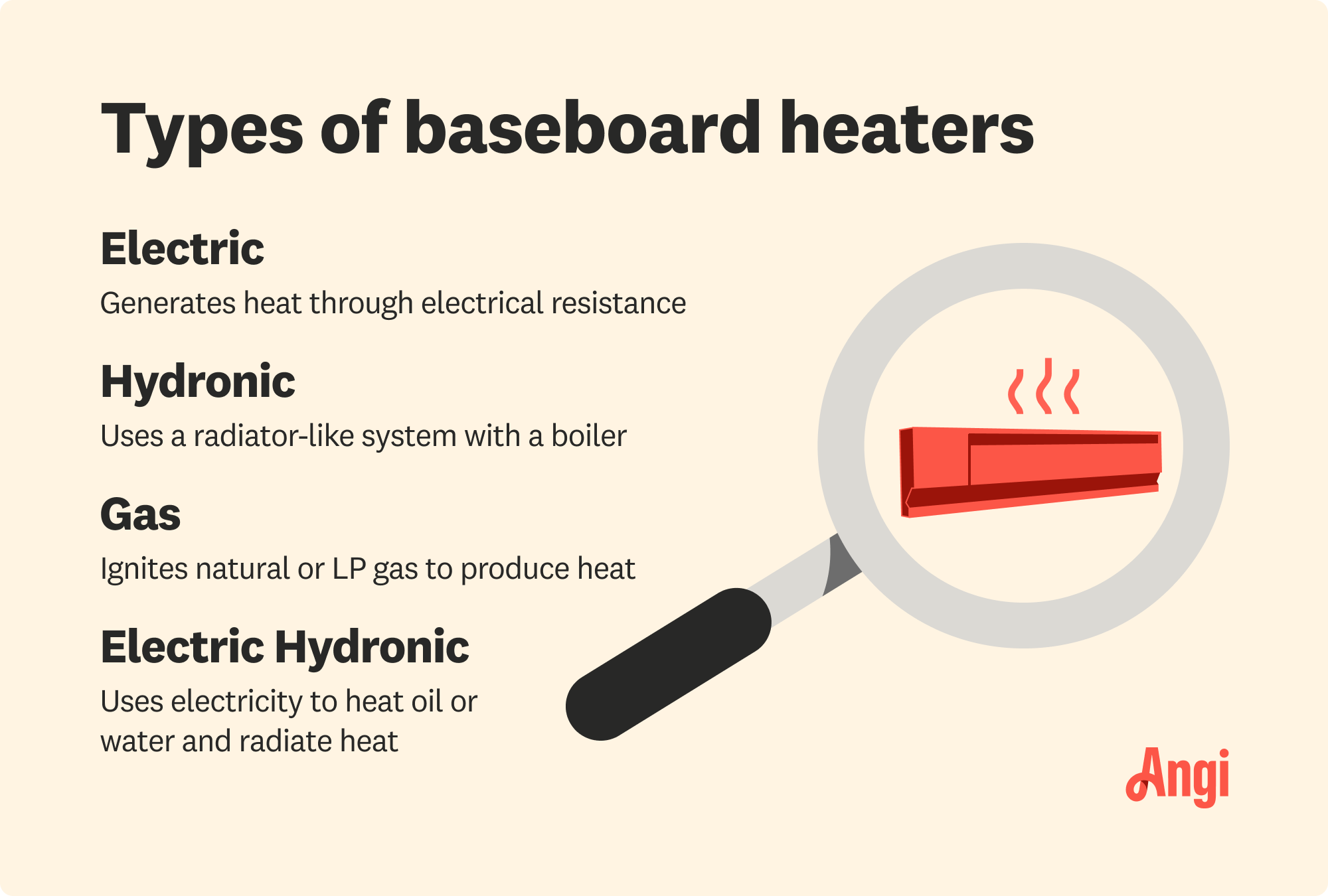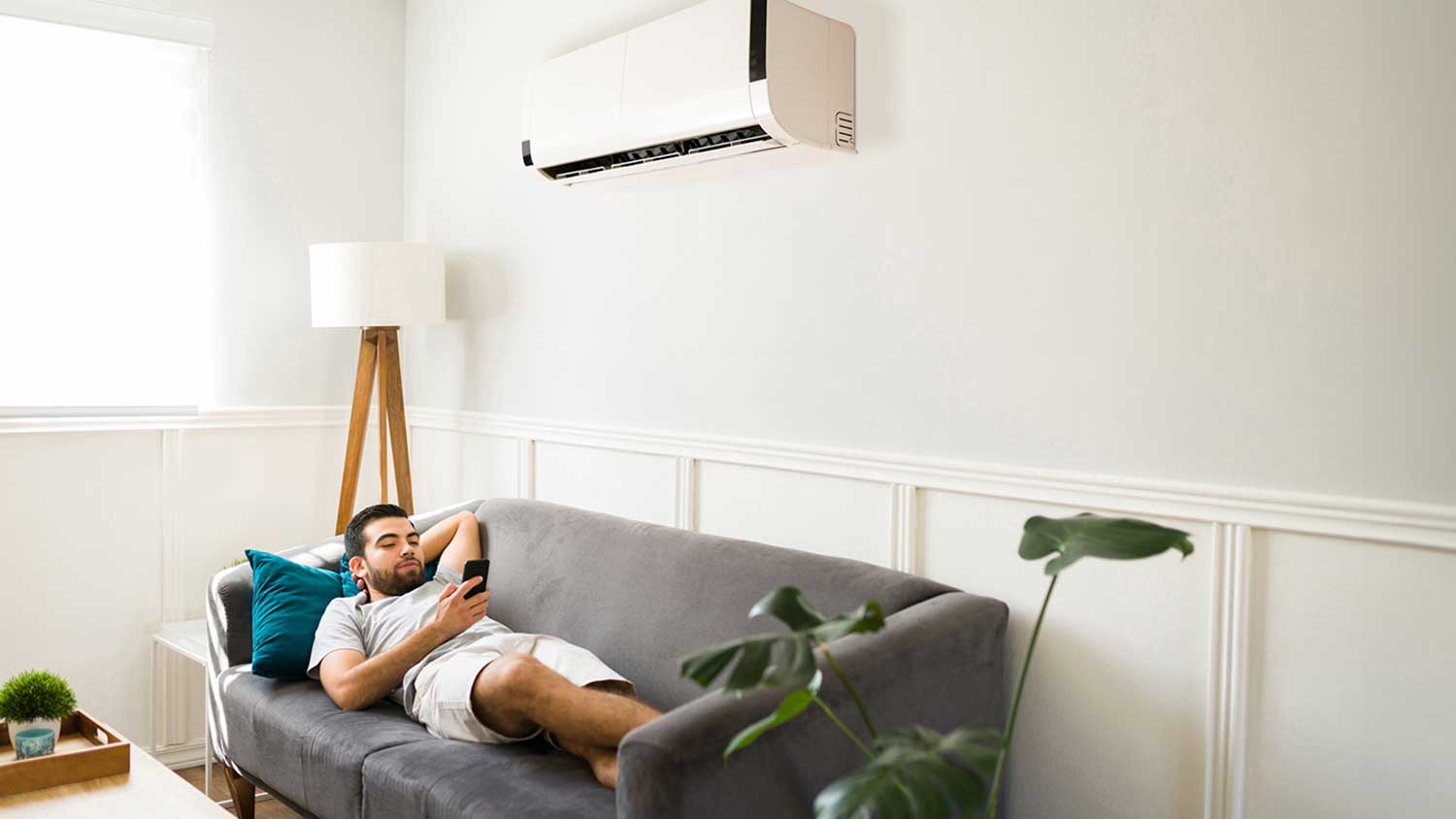What Is Baseboard Heating? A Complete Guide
Room-by-room heat systems are still a viable choice


Baseboard heaters sit against walls and radiate heat to warm a room, and they’re controlled with onboard knobs or a nearby thermostat.
Baseboard heaters can be electric, gas-powered, or hydronic with a boiler system.
These heaters don’t need ductwork or fans, and users can choose the temperature level in each room.
Baseboard heaters aren’t as efficient as other options and can create fire hazards or lead to unbalanced heating.
Baseboard heaters can be a good choice for finishing a room, heating a rarely-used guest room, or offering a secondary heating source for cold spaces.
While whole-house heating systems are common, not all homes have them, and they aren’t always an option for small homes or new additions. Baseboard heating allows you to warm specific rooms with a wall-based heater that runs on electricity, gas, or boiler-heated water.
However, baseboard heating has its pros and cons, so be sure to consult a local baseboard heating professional before installing them in your home. Let’s review what you need to know before choosing baseboard heating for a remodel or new home.
What Is Baseboard Heating, and How Is it Used?

Baseboard heating is an alternative method of home heating that uses room-by-room heaters positioned close to the wall to maximize space. They’re named for their close proximity to the baseboards, or boards that line the bottom of the walls where they meet the floor.
Traditionally, baseboard heating is found in older homes or homes that don’t have a whole-house HVAC heating system. That’s how they avoid the need for central heating furnaces, fan systems, and ductwork. Adding baseboard heaters is an easier choice when remodeling, adding a room, or finishing a basement, with the help of a local baseboard heating installer.
Types of Baseboard Heaters

There are several different types of baseboard heating, depending on how they generate heat. All three types look similar and operate the same way aside from their heat source. Baseboard heater controls are either housed in a nearby thermostat or use knobs and switches on the heater.
Electric Baseboard Heaters
Electric baseboard heaters generate heat through electrical resistance when a current passes through them. Convection heaters are some of the least efficient and most costly heating options because of the amount of electricity they use, but you can install them nearly anywhere in your home with ease.
Gas Baseboard Heaters
Gas baseboard heaters work like a small gas fireplace (albeit not as decorative), igniting natural or LP gas to produce direct heat. They are one of the least common types of baseboard heaters because of the installation costs, but they are very efficient to run.
Hydronic Baseboard Heaters
Hydronic baseboard heaters use a radiator-like system with a boiler that heats pressurized water and sends it through baseboard heaters. The water’s heat then radiates out into the room. This type of baseboard heater has the least risk of causing fires or heat damage, but requires much more maintenance when taking care of your boiler.
Benefits of Baseboard Heating

While baseboard heating isn’t as common as a central system, it has important advantages, which include:
Targeted heating by room: Many baseboard heaters allow you to heat a specific room, quickly and easily. That can help save energy, and it lets you adjust heat in each room based on its use or the location of cold spots in a house.
Saving money on remodeling: Since baseboard heaters don’t need fans or ductwork, they’re less expensive to install if you are adding a new room or finishing a room. Since they aren’t connected to the main heating system, they’re a great choice if you want to rent out a section of your home.
Less dust and allergens: Without ducts and a fan blowing air, baseboard heaters reduce moving air and limit the places that dust or allergens can hide out.
Simple maintenance: With few moving parts and basic, easy-to-reach components, many baseboard heaters are low maintenance and easy to care for. Hydronic baseboard heaters take more work because of the boiler, but they compare favorably to managing an HVAC furnace.
Cons of Baseboard Heating
Baseboard heating has its drawbacks, especially compared to whole-house systems.
More expensive: Even when using zone heating and targeting specific rooms, baseboard heaters can be expensive to run. The cost to run baseboard heaters for 10 hours per day is $500 to $1,000 per month.
Fire hazards: Baseboard heaters generate lots of direct heat, which create safety hazards. If turned too high or left on too long, they can melt and scorch surrounding materials, even nearby walls. They may cause house fires as a result, especially when left unsupervised.
Limited reach: Baseboard heating radiates out from the heater into the room. That’s great when you’re close to the heater, not so much when you’re on the other side of the room. That’s why these heaters struggle in large rooms (which may need more than one baseboard heater) and work best in smaller areas.
Heating takes longer: Without a forced air system, baseboard heaters struggle to heat a room quickly, so it will take longer for a thermostat to register. That’s especially true of hydronic systems. Unfortunately, that may lead to uneven heating results.
When Should You Install Baseboard Heating?
So, when are baseboard heaters the right choice in today’s homes? Think about these scenarios:
You only need to heat one room infrequently: Baseboard heaters can act as a secondary heat source for a room that gets cold easily, or a heating option for rarely-used rooms.
You need permanent heating without ductwork or a central furnace: If your home doesn’t have room for ductwork or you want to avoid the expense of installing a whole-house furnace and heating system, baseboard heaters are a feasible alternative.
You’re finishing a basement or attic: Finished basements and attics benefit most from a separate heating source, especially if you plan on renting them out.
You want to save money when adding a room: Baseboard heating has lower initial costs than adding ductwork during a remodel, helping to lower costs.
Avoid placing any objects too close to baseboard heaters. Place them at least several inches away from the heating system. Convection heaters have internal components that can grow very hot and scorch nearby materials or cause fires if objects are too close. While hydronic baseboard heaters may not cause fires so easily, they still need lots of room to effectively heat the air so it spreads throughout the room. Keep beds, curtains, blankets, furniture, lamps, toys, and other home items away from the heater. Never put towels or blankets on the heater to dry.
Hydronic or water-based radiant baseboard heaters are by far the most efficient version. Upfront costs may be higher because of the boiler installation, but ongoing heating costs are lower. This is one of the few ways that switching to baseboard heaters can save money if you are moving away from using space heaters or electric heaters. Otherwise, baseboard heating tends to cost more than other heating options when used frequently.
It’s common to connect multiple baseboard heaters to the same thermostat so you can control them all at once. Adjusting the thermostat will turn all connected heaters on or off accordingly. But this also removes some advantages of baseboard heaters: You can no longer easily heat a single room where people are to help save money, and it’s much harder to raise the heat in one cold room while leaving temperature levels the same in others.
When the heater’s sensors (or those of the thermostat that controls it) detect that the set temperature has been reached, the heater should turn off. Otherwise, something isn’t working. In practice, results can vary based on the placement of the thermostat and heater. There’s a chance one side of the room could become much warmer than the other when baseboard heaters aren’t properly balanced.





- Furnace Repair
- Air Conditioning Repair
- HVAC Repairs
- Furnace Installation
- Wood & Pellet Stove Repair
- Dehumidifier & Humidifier Repair
- Heat Pump Companies
- Swamp Cooler Repair
- Wood Stove Services
- HVAC Companies
- Commercial A/C Repair
- Geothermal Installation
- Air Conditioning Installation
- Boiler Repair
- 24 Hour Furnace Repair
- Geothermal Repair
- Heat Pump Repair
- Humidifier Installation
- Thermostat Repair
- Thermostat Installation
- Nest Installation
- Heating & Cooling
- Heating Repair
- Furnace Cleaning
- Furnace Tune-Up
- HVAC Technicians
- Subcontractors
- Furnace Maintenance
- Plumbing & Heating Companies
- Wood Stove Inspection
- Mini Split Installation
- Wall Heater Repair
- Duct Installers










